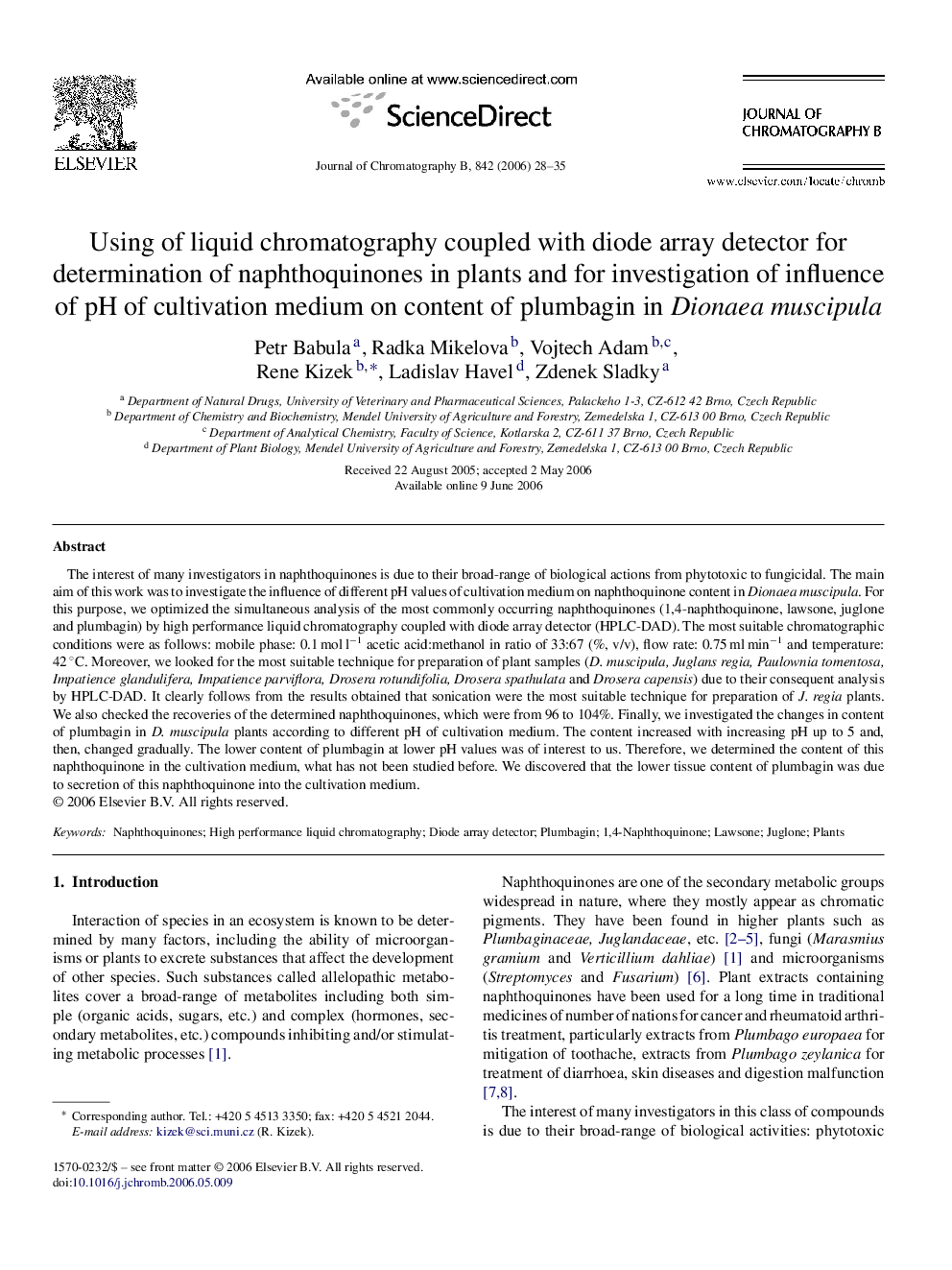| کد مقاله | کد نشریه | سال انتشار | مقاله انگلیسی | نسخه تمام متن |
|---|---|---|---|---|
| 1216055 | 966994 | 2006 | 8 صفحه PDF | دانلود رایگان |

The interest of many investigators in naphthoquinones is due to their broad-range of biological actions from phytotoxic to fungicidal. The main aim of this work was to investigate the influence of different pH values of cultivation medium on naphthoquinone content in Dionaea muscipula. For this purpose, we optimized the simultaneous analysis of the most commonly occurring naphthoquinones (1,4-naphthoquinone, lawsone, juglone and plumbagin) by high performance liquid chromatography coupled with diode array detector (HPLC-DAD). The most suitable chromatographic conditions were as follows: mobile phase: 0.1 mol l−1 acetic acid:methanol in ratio of 33:67 (%, v/v), flow rate: 0.75 ml min−1 and temperature: 42 °C. Moreover, we looked for the most suitable technique for preparation of plant samples (D. muscipula, Juglans regia, Paulownia tomentosa, Impatience glandulifera, Impatience parviflora, Drosera rotundifolia, Drosera spathulata and Drosera capensis) due to their consequent analysis by HPLC-DAD. It clearly follows from the results obtained that sonication were the most suitable technique for preparation of J. regia plants. We also checked the recoveries of the determined naphthoquinones, which were from 96 to 104%. Finally, we investigated the changes in content of plumbagin in D. muscipula plants according to different pH of cultivation medium. The content increased with increasing pH up to 5 and, then, changed gradually. The lower content of plumbagin at lower pH values was of interest to us. Therefore, we determined the content of this naphthoquinone in the cultivation medium, what has not been studied before. We discovered that the lower tissue content of plumbagin was due to secretion of this naphthoquinone into the cultivation medium.
Journal: Journal of Chromatography B - Volume 842, Issue 1, 14 September 2006, Pages 28–35